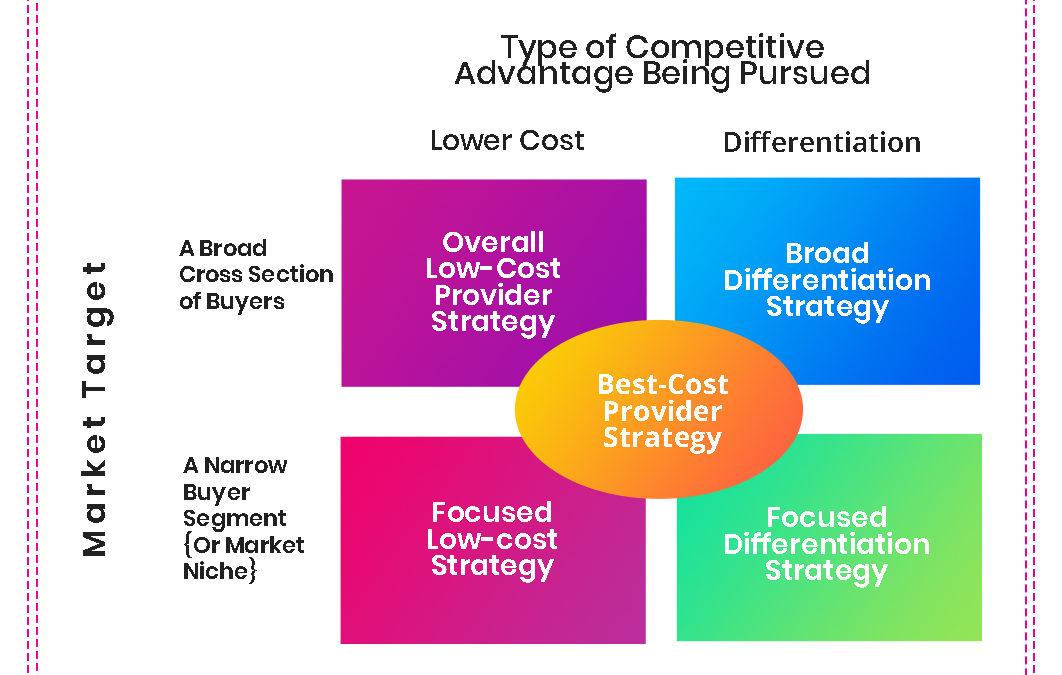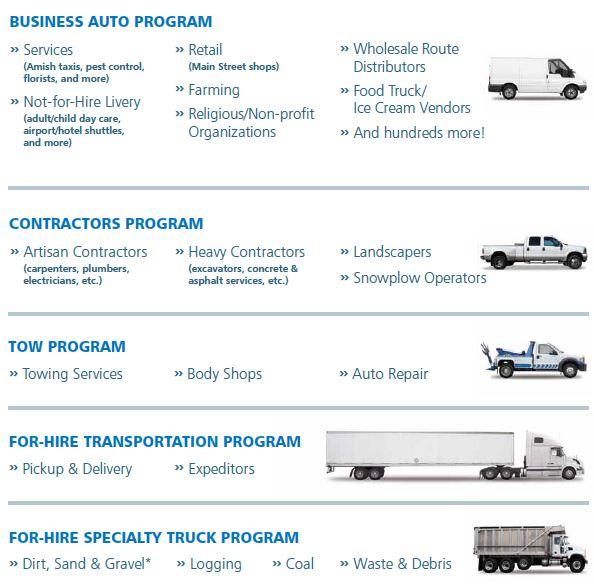In the intricate world of transportation, where heavy machinery meets the open road, the stakes are high, quite literally. High-risk trucking insurance is a critical component for fleets navigating the complexities of logistics, ensuring that both drivers and freight are protected from unforeseen incidents.Yet,for many trucking companies,the question looms large: how are premiums for this specialized insurance calculated? This article delves into the multifaceted methods employed by high-risk trucking insurance companies,unearthing the factors that influence cost and the rationale behind their assessments. By understanding these calculations, trucking professionals can better navigate their insurance needs, ultimately driving their businesses forward with confidence amidst the uncertainty of the open road.
Understanding the Factors Influencing Premium Rates in High-Risk Trucking Insurance
In the complex landscape of high-risk trucking insurance,several critical factors converge to shape premium rates. Driving history plays a pivotal role; drivers with a track record of accidents or violations are perceived as higher risks. Furthermore,the type of cargo being transported influences rates significantly. Hazardous materials or high-value goods attract elevated premiums due to their potential liability and theft risk. Also essential are the vehicle attributes—age, make, model, and safety features all contribute to the insurer’s assessment. An older vehicle, for example, might be associated with more frequent breakdowns, leading to increased costs for the insurer.
Another crucial aspect is the operating environment. Trucking companies operating in areas prone to severe weather, high crime rates, or heavy traffic typically face higher rates due to the elevated chances of accidents or vehicle damage. Additionally, the size and operational history of a trucking business can impact insurance costs; established companies with comprehensive safety programs may secure more favorable rates than newer, less experienced firms. claims history not only of individual drivers but also of the company as a whole plays a vital part—frequent claims may signal to insurers that a business is not managing risks effectively, thereby pushing premiums even higher.

The Role of Driver History and Vehicle Safety in Premium Calculations
In the complex world of high-risk trucking insurance, personal driving history and vehicle safety ratings serve as pivotal factors in determining premium costs. Insurers meticulously analyze an individual’s driving record, looking for indicators such as the frequency of accidents, traffic violations, and overall road experience. Drivers with a clean track record typically enjoy lower premiums, as they signify reduced risk to the insured cargo and public safety. In contrast, those with frequent infractions or accidents face increased costs, reflecting their higher likelihood of future claims.
Vehicle safety is equally crucial in the premium calculation process. Insurance providers evaluate the safety features and overall condition of the truck, including aspects like anti-lock brakes, collision avoidance systems, and other advanced technologies designed to protect against accidents. For instance, fleets employing vehicles equipped with the latest safety innovations, despite being older models, may receive favorable rates due to their enhanced risk mitigation.To illustrate the impact of vehicle safety ratings on premium calculations, consider the following table:
| Vehicle Safety Rating | Typical Premium Adjustment |
|---|---|
| 5-Star Rating | -15% |
| 4-Star Rating | -10% |
| 3-Star Rating | 0% |
| 2-Star Rating | +10% |
| 1-Star Rating | +20% |

Evaluating the Impact of Industry Trends on Insurance Costs for High-Risk Trucking
As the trucking industry evolves, various trends directly influence insurance premiums, especially for high-risk operators.One significant factor is the adoption of advanced technology in fleet management.This includes the use of GPS tracking, driver monitoring systems, and automated safety features. Insurers often view such advancements as mitigating risks, which can lead to lower premiums for businesses that invest in these technologies. Additionally, market demand fluctuations can affect cost structures; if the economy is booming, the increased demand for goods transport can push up premiums due to perceived higher risks on the road.
Another critical trend is the regulatory changes impacting the industry,such as stricter safety regulations or changes in permissible driving hours. These regulations can lead to higher compliance costs, prompting insurers to adjust their pricing strategies accordingly. On the flip side, companies that demonstrate a commitment to safety and compliance through certifications may benefit from cost reductions. Furthermore, factors like the introduction of new vehicle types, such as electric trucks, may alter risk assessments and subsequently influence premium calculations. It’s essential for trucking companies to stay informed about these evolving industry trends to understand their impact on insurance costs.

Strategic Approaches to Optimize Premiums and Enhance Safety Standards
To effectively manage insurance costs while ensuring safety on the roads, trucking companies must adopt tactical measures that align safety practices with premium optimization.Investing in advanced telematics and GPS tracking systems can provide real-time data on driver behavior, allowing companies to identify high-risk activities and implement corrective training programs. Alongside this, regular safety audits and maintenance checks can significantly reduce the likelihood of accidents, reinforcing a commitment to safety that insurers favor. Furthermore, fostering a culture of safety among drivers through incentives and recognition for accident-free performance can enhance overall fleet safety, ultimately influencing premium calculations favorably.
Another crucial element involves the selection of appropriate coverage options tailored to specific operational risks. By exploring customizable policies, companies can find a balance between sufficient coverage and manageable premiums. creating a safety committee can be beneficial, as it not only enhances safety standards but also demonstrates a proactive approach to risk management which can be attractive to insurers. Incorporating the following strategies may further assist in lowering premiums:
- implementing driver training programs focused on defensive driving.
- Conducting thorough background checks to evaluate driver reliability.
- Utilizing predictive risk assessment tools to mitigate future incidents.
| Strategy | Benefits |
|---|---|
| Telematics Systems | Real-time monitoring of driver behavior |
| Safety Audits | Identification and mitigation of risks |
| Customized Policies | Coverage tailored to operational needs |
Q&A
Q&A: How high-Risk Trucking Insurance Companies Calculate Premiums
Q1: What is high-risk trucking insurance, and why do some trucking companies need it?
A1: High-risk trucking insurance is a specialized form of coverage designed for trucking businesses considered more risky due to factors such as a history of accidents, poor safety records, or operating in high-traffic or hazardous areas. Companies may find themselves in this category due to expensive cargo,inexperienced drivers,or operating practices that elevate risk,prompting the need for this comprehensive insurance.
Q2: What factors do insurance companies consider when determining a premium?
A2: Insurance companies look at various factors when calculating premiums for high-risk trucking. Key elements include the company’s accident history, the driving records of its operators, the type of cargo being transported, the geographical areas served, the safety measures in place, and even the age and condition of the vehicles. Each of these components contributes to the perceived risk associated with insuring the truck fleet.
Q3: How does a trucking company’s driving history influence its premium?
A3: A trucking company’s driving history is one of the most significant components in determining premiums. If a company has a record of multiple accidents or traffic violations,insurers view it as a higher risk,leading to increased premiums. Conversely, a clean driving record may lead to discounts, making responsible driving practices a vital aspect of risk management in the industry.
Q4: Do the types of cargo shipped affect insurance costs?
A4: Absolutely! The nature of the cargo significantly influences insurance premiums.Transporting hazardous materials, for example, poses additional risks, leading to higher premiums. On the other hand,shipping general freight like textiles may incur lower costs. Insurers assess the potential danger associated with the cargo as part of the overall risk assessment.
Q5: How does geographical area play a role in premium calculation?
A5: Geographic location affects premiums due to varying traffic patterns, crime rates, and weather conditions.Trucking companies operating in urban areas with heavy traffic or those frequently traversing accident-prone routes may face higher premiums. Moreover, regions with severe weather can increase the likelihood of accidents or cargo damage, prompting insurers to charge more for coverage.
Q6: What safety measures can trucking companies implement to perhaps lower their premiums?
A6: Trucking companies can adopt several safety measures to potentially lower their insurance premiums. Implementing comprehensive driver training programs, installing advanced safety features in vehicles, maintaining a regular vehicle maintenance schedule, and using fleet management technology to monitor driver behavior and compliance can all demonstrate a commitment to safety and risk reduction, possibly resulting in premium discounts.
Q7: how frequently enough do insurance companies reassess premiums for high-risk trucking companies?
A7: Insurers typically reassess premiums annually, even though this can vary based on the insurance provider or significant changes in the company’s operations. If a trucking company has made notable improvements—like a reduction in accident rates or enhancements in safety protocols—its advisable for them to discuss these changes with their insurer to potentially negotiate lower premiums.
Q8: Can high-risk trucking companies appeal their premiums if they’re considered excessive?
A8: yes, high-risk trucking companies can appeal their premiums if they believe they are excessive. It’s essential for the company to provide evidence of improvements in safety records and compliance with regulations. This might include updated driver training programs, maintenance logs, and documents demonstrating adherence to best practices. Engaging with an insurance agent to understand the rationale behind the premium can also be beneficial in these discussions.
Q9: What advice can you give to trucking companies seeking to improve their risk profile?
A9: Trucking companies aiming to improve their risk profile should focus on investing in driver training, enhancing vehicle maintenance, employing safety technology, and cultivating a culture of safety within their operations. Regularly reviewing and updating safety policies, encouraging open interaction about risky practices, and staying informed about industry changes can also significantly contribute to minimizing risks and fostering better relationships with insurance providers.
whether navigating the intricacies of high-risk trucking insurance or ensuring compliance and safety, understanding how premiums are calculated can empower trucking companies to make informed decisions that can optimize their overall risk management strategy.
Future Outlook
In the complex world of high-risk trucking insurance, understanding how premiums are calculated is vital for both operators and brokers alike. As we’ve explored, factors ranging from driving history and vehicle type to the nature of cargo all play pivotal roles in shaping insurance rates.By grasping these variables, trucking companies can not only make informed decisions but also implement strategies to mitigate risks and potentially lower their premiums in the long run.
As the transportation landscape continues to evolve, remaining educated about the intricacies of insurance pricing serves as an essential tool for navigating the challenging waters of high-risk trucking. Investing time in understanding these processes arms operators with the knowledge needed to protect their assets, their drivers, and ultimately, their bottom line.
In the realm of high-risk trucking, knowledge truly is power—so equip yourself with the insights shared here, and steer your business towards a more secure and resilient future on the road.
